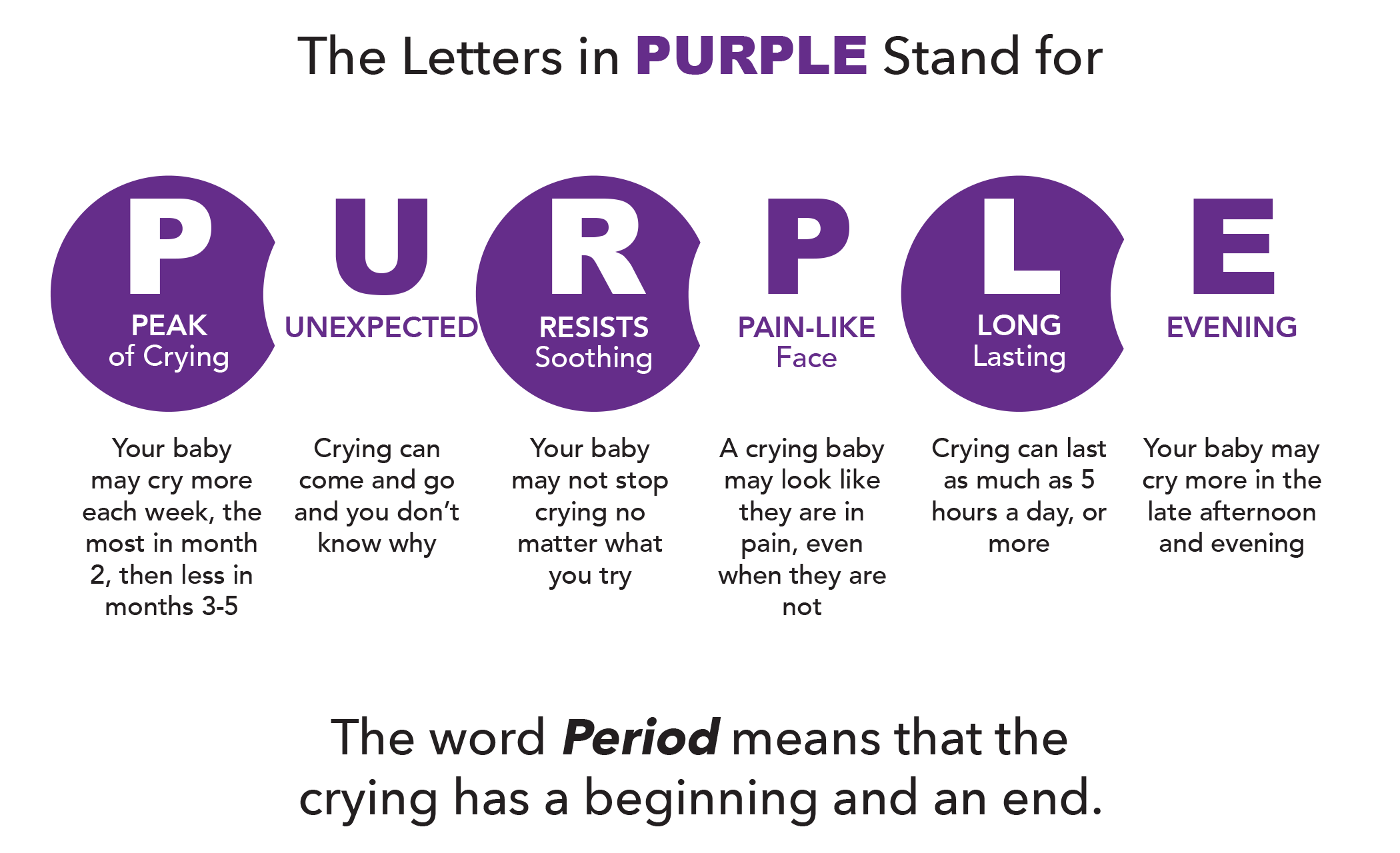What are the symptoms of purple crying?
Purple crying is a term used to describe a phase of increased crying and fussiness in infants, typically occurring between the ages of 2 weeks and 3-4 months. The symptoms of purple crying include:
- Excessive Crying: Infants may cry more than usual, often for extended periods. The crying can be intense and difficult to soothe.
- Crying Spells: The crying tends to occur in the late afternoon or evening and can last for several hours at a time.
- Unpredictable Patterns: The crying is often unpredictable, with no clear cause or reason that can be identified. It may seem to come and go without any apparent triggers.
- Inconsolability: The baby may be difficult to calm, and usual soothing methods like feeding, rocking, or changing diapers may not help.
- Physical Symptoms: The baby might show physical signs of discomfort or distress, such as clenching fists, arching their back, or turning red in the face.
- Normal Developmental Behavior: Despite the increased crying, the baby is generally healthy and continues to gain weight and grow normally.
Purple crying is a normal developmental phase that many infants go through. It is not caused by any underlying medical condition or parental behavior. However, it can be stressful for parents, and seeking support or advice from healthcare providers can help manage the challenges associated with this period.
What are the causes of purple crying?
Purple crying is a term used to describe a normal phase of increased crying and fussiness in infants, and its causes are largely developmental rather than pathological. The term “purple” is an acronym to help parents understand the typical characteristics of this phase:
- P: Peak pattern of crying. Crying is often at its most intense during the early months of life, typically peaking around 6-8 weeks.
- U: Unexpected crying. The crying often appears suddenly and without a clear cause.
- R: Resists soothing. Babies may be difficult to calm despite usual soothing techniques.
- P: Pain-like face. The baby may appear to be in pain, though there is usually no underlying medical issue.
- L: Long lasting. Crying episodes can last for several hours, particularly in the late afternoon or evening.
- E: Evening. Crying tends to be more frequent in the late afternoon and evening.
The causes of purple crying are generally related to the developmental stages of infants and are not indicative of any illness or disorder. Theories about why this phase occurs include:
- Maturation of the Nervous System: As the infant’s nervous system matures, they may become more sensitive to external stimuli, leading to increased fussiness and crying.
- Adjustment to the External Environment: Infants are adjusting to life outside the womb, and this period of increased crying may be part of their adaptation to the new environment.
- Normal Developmental Phase: The increase in crying is considered a normal part of infant development and often resolves on its own as the baby grows and develops better self-regulation and communication skills.
- Colic: While not a cause of purple crying, some infants with colic exhibit similar symptoms of excessive crying and fussiness, which can overlap with the purple crying phase.
It’s important for parents to understand that purple crying is a normal part of infancy and to seek support if they find the experience overwhelming. If an infant’s crying is accompanied by other concerning symptoms, it’s always best to consult a healthcare provider to rule out any underlying medical conditions.
What is the treatment for purple crying?
Purple crying is a normal developmental phase in infants, so no specific medical treatment is required. However, there are strategies and techniques that can help manage and alleviate the stress associated with this phase for both the baby and parents:
- Comforting Techniques: Use soothing methods such as rocking, swaddling, gentle patting, or using a pacifier. Sometimes, a warm bath or white noise can also help calm the baby.
- Consistent Routine: Establishing a consistent daily routine can provide a sense of stability for the baby and may help reduce crying episodes over time.
- Ensure Basic Needs Are Met: Make sure the baby is fed, has a clean diaper, and is comfortable. Addressing these needs can sometimes alleviate excessive crying.
- Safe Environment: Create a calming environment with dim lighting and soft sounds. Avoid overstimulation, which can sometimes contribute to fussiness.
- Parent Support: Seek support from family, friends, or parenting groups to share experiences and get advice. It’s important for parents to take breaks and practice self-care to manage their stress.
- Crying Management Techniques: Techniques such as the “Five S’s” (swaddling, side or stomach position, shushing, swinging, and sucking) can be effective in soothing a crying baby.
- Professional Help: If the crying seems excessive or is accompanied by other concerning symptoms, consult a healthcare provider to rule out any underlying medical conditions.
Understanding that purple crying is a normal phase can help parents cope better. If parents are struggling with the emotional toll, professional counseling or support services can also be beneficial.

Leave a Reply
You must be logged in to post a comment.